An incredible herb you can add to your foraging repertoire, kinome leaves are a chef's secret.
Update: After years of wondering why some leaves taste different than others, I now suspect that the good tasting leaves are from female plants. The male plants should produce superior berries (Szechuan peppercorns.
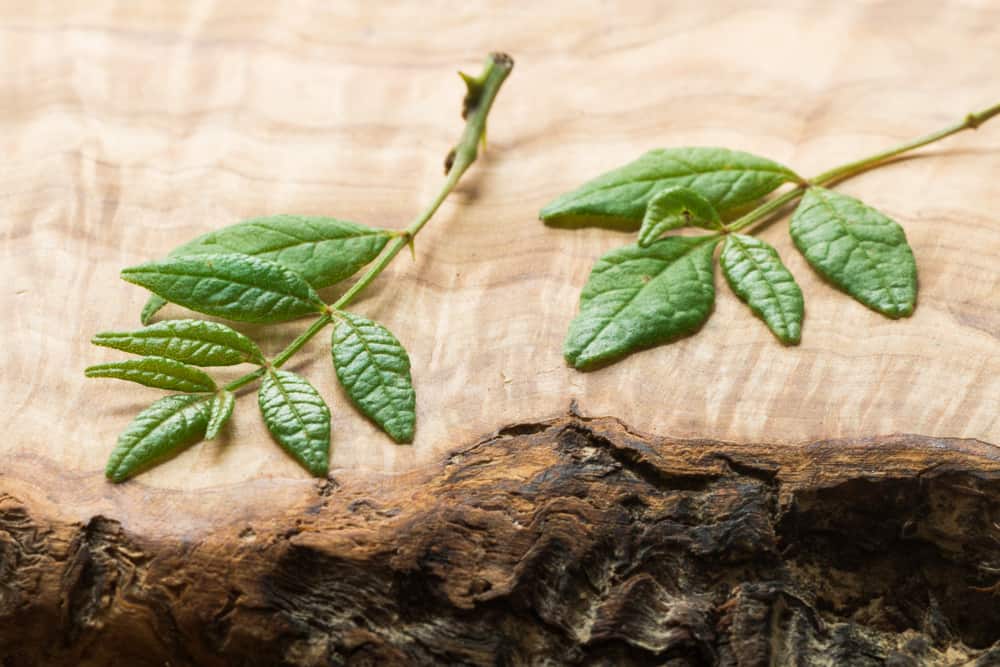
In Minnesota and the surrounding area, its too cold for citrus plants to grow, or is it? Prickly ash/Zanthoxylum species is technically in the rue/citrus family. It doesn’t make a fruit like a lemon or lime, but it does make fruit-small, limey tasting berries which are technically wild Szechuan peppercorns, which I talked about previously in this post here. I like adding the berries to things were fresh citrus would be good, especially with raw or cured fish.
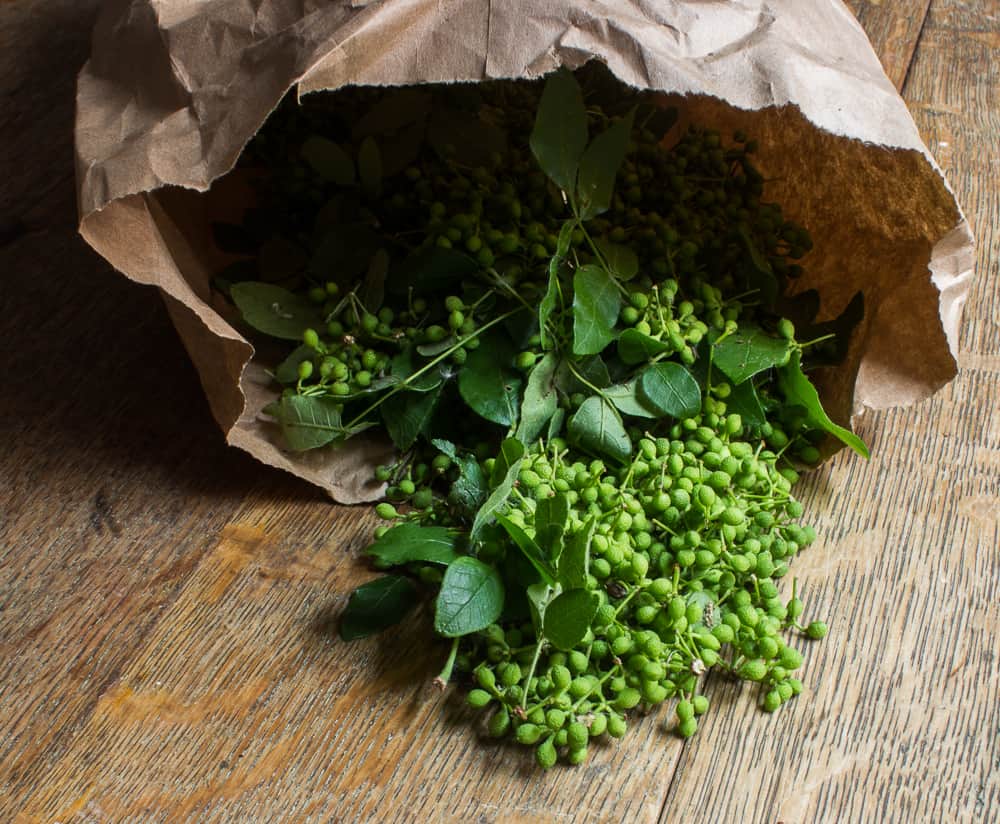
Here and there I saw that in Japanese, the leaves are referred to as “kinome”, derived from ki (tree) me (bud) respectively, and also as “sansho”. The traditional berries harvested for sale and imported to the U.S. should be: Zanthoxylum simulans and Zanthoxylum bungeanum.
Prickly ash is everywhere, so there are plenty of leaves to try. But every time I tasted them I thought, “There’s nothing special about this!”. The taste was always bland and spinach-y with only a hint of the citrus flavor the unripe green berries have, they really weren’t exciting at all.
One day my girlfriend and I were taking a walk up the hill on her farm by where the prickly ash bushes were, and as we walked past, I thought of how unimpressed I was with the leaves, and we talked about them for a while on our walk.
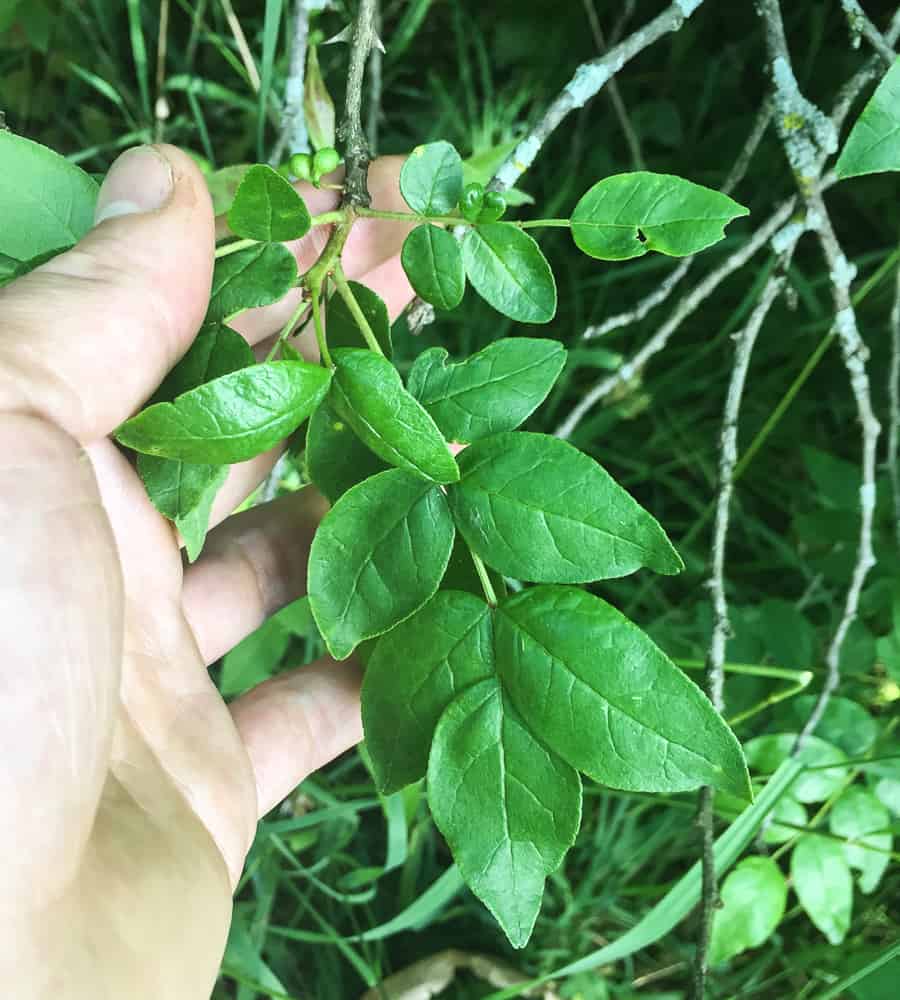
Talking about food has a way of making you crave it, so I munched on a kinome leaf, still unimpressed. As we walked by one of the bushes, my girlfriend plucked another leaf and tried it.
“Oh this one is really good!” she said. I tasted one from the same plant, and it was much more interesting than the other I'd just eaten, It was a dead ringer for kaffir lime, the citrus-y leaves used in curries.
It took me a little while to understand what was going on with the leaves, but now I understand. Just like with hunting porcini, the difference in flavor was because I'd been eating not one, but a number of different species of prickly ash, and they don't all taste the same.
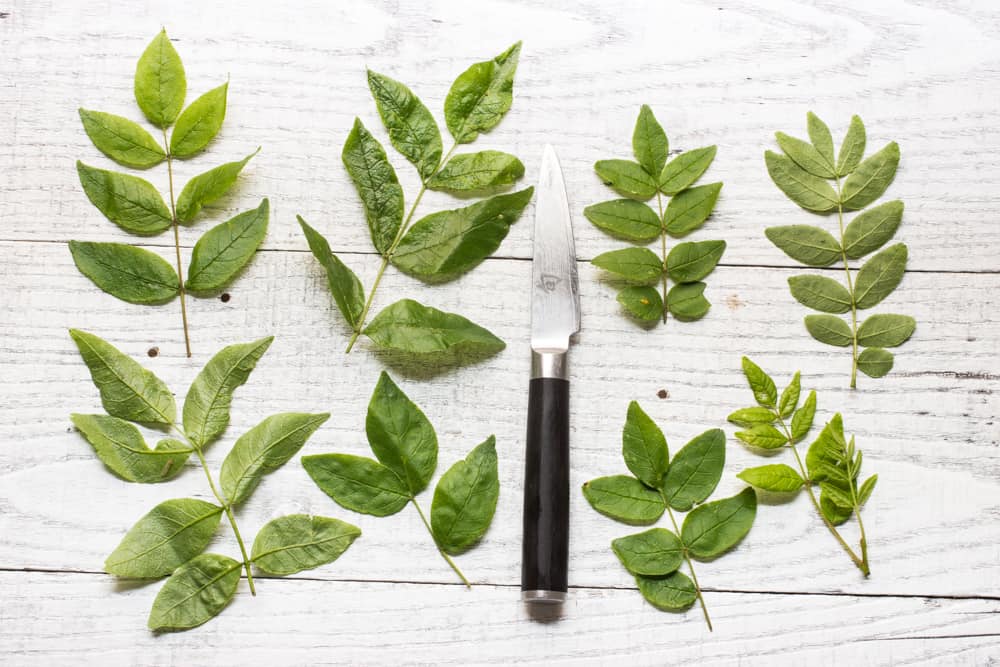
The flavor of the leaves is powerful, but delicate at the same time. To release their perfume, the leaves need to be chewed, or broken up somehow, otherwise you won’t taste them at all.
I’ve seen Japanese cooking shows where they put whole sprigs of the plant in their palm and “clap” it to activate it’s scent, which works ok, my line cooks sure get a kick out of it. Also, the more ingredients that are in a dish, the less you will taste the leaves, less is really more with these, and they need to be on their own to shine.
So, my assumption is that the one tasty species I’ve come across is about as close to “real” Szechuan peppercorn species as I'm going to get here in Minnesota. Like I mentioned, It’s been very difficult to find a species of prickly ash with good tasting leaves here in the Midwest, but they’re out there and if you taste the right one, you’ll know it.
I’ve noticed a similarity in the leaves of different species too, mainly that the leaves of the tasty species are a bit smaller, and more ovoid than the others, as well as being closer together and more numerous on the branch. Other than that though, you really just have to taste them to see the difference.
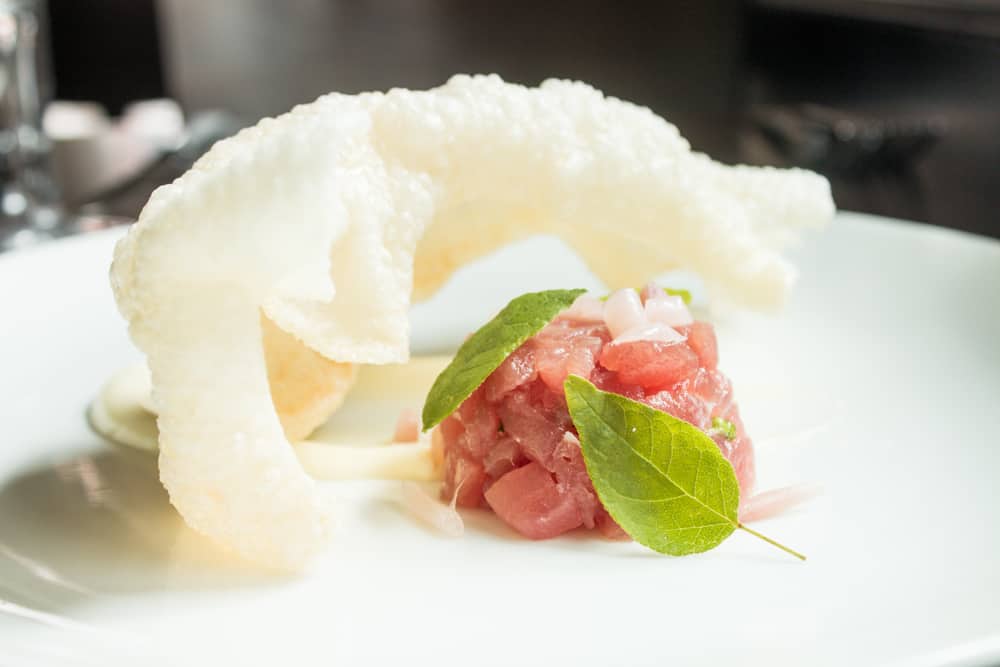
Like I said, I love to serve these with fish. Here's my favorite summer preparation so far-a light tuna tartare that features both the berries and the leaves of this special plant.
Ahi Tuna Tartare, Pickled Ramps, Lemon Aioli, and Kinome Leaves
Equipment
- 1 small mixing bowl
- 1 8 inch chef's knife
Ingredients
- 2 ounces fresh no.1 ahi tuna diced ½ inch
- Fresh kinome leaves to garnish
- 1 teaspoon pickled ramps sliced (see recipe)
- 2 tablespoons lemon aioli see note
- Kosher salt
- Virgin sunflower oil
- A few green Szechuan peppercorns
- White rice crackers
Instructions
- Season the tuna with salt and a little of the sunflower oil, pickled ramps and a few of the Szechuan peppercorns to taste, making sure to double check the seasoning before you plate the dish.
- On the middle of a chilled plate, place the tablespoons of the lemon aioli, then put a small ring mold down and pack the tuna mixture into it, pressing down lightly with a spoon to make it stay put.
- Garnish with some of the kinome leaves and a rice cracker, then serve immediately.
Notes
Nutrition
Ahi Tuna Tartare With Pickled Ramps, Lemon Aioli, Szechaun Peppercorns and Kinome Leaves
Serves 2 as an appetizer
Ingredients
- 2 ounces fresh no.1 ahi tuna, diced ½ inch
- Fresh kinome leaves, to garnish
- 1 teaspoon pickled ramps, sliced (see recipe)
- 2 tablespoons lemon aioli (see recipe)
- Kosher salt
- Virgin sunflower oil
- A few green Szechuan peppercorns
- White rice crackers, (see recipe)
Method
Season the tuna with salt and a little of the sunflower oil, pickled ramps and a few of the Szechuan peppercorns to taste, making sure to double check the seasoning before you plate the dish. On the middle of a chilled plate, place the tablespoons of the lemon aioli, then put a small ring mold down and pack the tuna mixture into it, pressing down lightly with a spoon to make it stay put. Garnish with some of the kinome leaves and a rice cracker, then serve immediately.

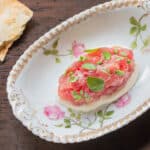
botanyboy
It is unlikely you are sampling different species of zanthoxylum if you are in minnesota, as there is only one species that grows there, Zanthoxylum americanum. The only other native species is Zanthoxylum clava-herculis, which grows in the Southeast. There are a few other species of Zanthoxylum known to be introduced into the U.S. but they are all either in Florida or Texas and adjacent areas, I think. It is more likely that the tastier leaves you are eating are the younger ones. Kinome is traditionally prepared in the spring, right after the tree puts out its tender young leaves. Regardless, your recipe sounds delicious.
Alan Bergo
Yes these have been confusing, and is why I absolutely don't claim to be a botanist. I would agree with what you're saying but they're confusing in part because the tasty leaves I pick I gather throughout the year, and different plants have leaves of different shapes. I have only seen the tasty leaves in two areas so far, typically I see what I assume is Z. americanum, as you say.
PY
Kinome are picked in the spring, only the tiny tender outer tips. Grind some to a paste in a suribachi*. Add a bit of white miso, sugar & rice vinegar**. It's an addictive sauce to serve with chilled tender slices of octopus but could be a sauce for salads or grilled dishes.
* = or mortar/pestle but suribachi is more efficient.
** = or lemon
Alan Bergo
Great tip. Thanks. Would you say this is similar to kinome-ae?
Akiko
Yes.
I’m in search for Sansho tree for 2 decades. I got many from 2 different sources over years. Here in zone 9, it is so hard to creat the better surroundings for Sansho..
One day, I found a prickly ash on the edge of the garden in my whiskey barrel. It survived subzero winter storm that killed my fig trees and the above 100 degree summers. To my surprise…the younger leaves taste just like real Japanese Sansho!!! Now, I just need to walk around and find the fruits in April or May next year!!!!
Alan Bergo
Akiko, glad you found some!
Sam Schaperow
"technically wild Szechuan peppercorns"
Wouldn't it be not "technically" since what's wild there aren't the species found in the Old World that are the actual "Szechuan peppercorns"?
Jessi Peterson
Well, that puts a whole new light on prickly ash - I have a hillside full of it and have been struggling not to hate it - it's a native, as opposed to buckthorn, the other bane of my existence. I probably can't eat my way out of prickly ash, but I can at least put it in the "useful" category now.
Alan Bergo
Very true. Unfortunately I've yet to find any use for buckthorn.